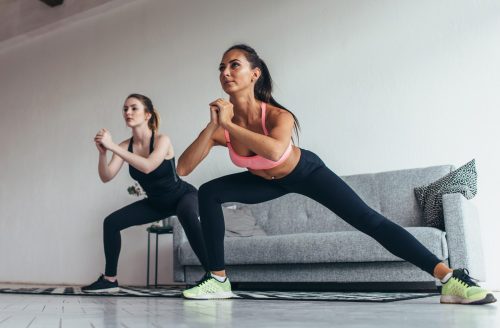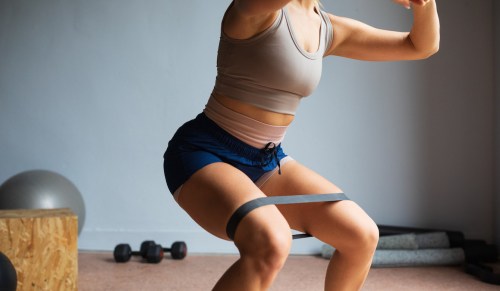Squats never fail to provide the best and worst burn. With a single movement, you’re working your glutes, core, thighs—more muscle groups than you probably realized. While there are numerous challenging variations of the traditional exercise, cossack squats offer the ultimate twofer with a tighter butt and improved hip mobility.
Cossack squats require some serious control. Instead of being totally stable on two feet, they’re performed side-to-side. Each time you lower down, most of your weight is supported by one leg while the other leg is positioned straight out to the side, resulting in a burn unlike anything you’ve ever felt before. Especially when you get to the point where your seat is nearly touching the floor.
“The cossack squat is unique in that it works in the frontal plane or laterally. Most of the movement we do in life and in training occurs in the frontal plane, or front to back,” says Eric Johnson, co-founder of Homage. “To offset this, we want to include movement variety that involves all three planes of motion. You can effectively utilize the exercise in a dynamic warmup, an assistance exercise, or as a regression to the pistol squat.”
According to Emily Samuel, a trainer at New York City’s Dogpound, cossack squats target your adductors, quads, glutes, upper back, and hip flexors. But you’ll reap more benefits than just toned muscles. They can also help reverse the negative effects of sitting at a desk all day.
“The cossack squat is a great exercise for all lifters and fitness goers to restore hip function and increase hip stability and mobility. People in today’s society are constantly sitting down, which limits the mobility in our hips. This exercise can even just be done with your bodyweight in the office to restore mobility,” Samuels says. “Cossack squats can help improve and restore the range of motion in your ankles, knees, and hips in a multi-planar fashion, as well as improve the strength and elasticity of your connective tissue and muscles.”
How to perform cossack squats correctly
1. Set up your stance with your feet outside of your shoulder width, toes turned out slightly. This will be individual to you, your hip structure, and your current mobility. Go with what feels best.
2. Shift your weight toward your right side and begin to sit. Dig your left heel into the ground and feel free to allow your toes to pick up. As you descend, push your right knee out over your toes and maintain a tall chest. Sit as low as possible with a neutral spine.
3. Once you achieve your lowest possible depth, push your foot through the ground and return to the start position. Adding a weight, held at your chest, may assist you in this movement. (It provides a counterbalance and helps integrate your core.) You may also add a low box under your hips to work toward.
Pro Tip: If you’re a beginner, start with a 15-pound weight. Get familiar with the movement before drastically increasing the challenge.
For other challenging squats, learn how to perform the kang squat (which is probably the reason why people say #sorefordays!) or the single-leg pistol squat. Both will leave you sweating.
Sign Up for Our Daily Newsletter
Get all the latest in wellness, trends, food, fitness, beauty, and more delivered right to your inbox.
Got it, you've been added to our email list.











